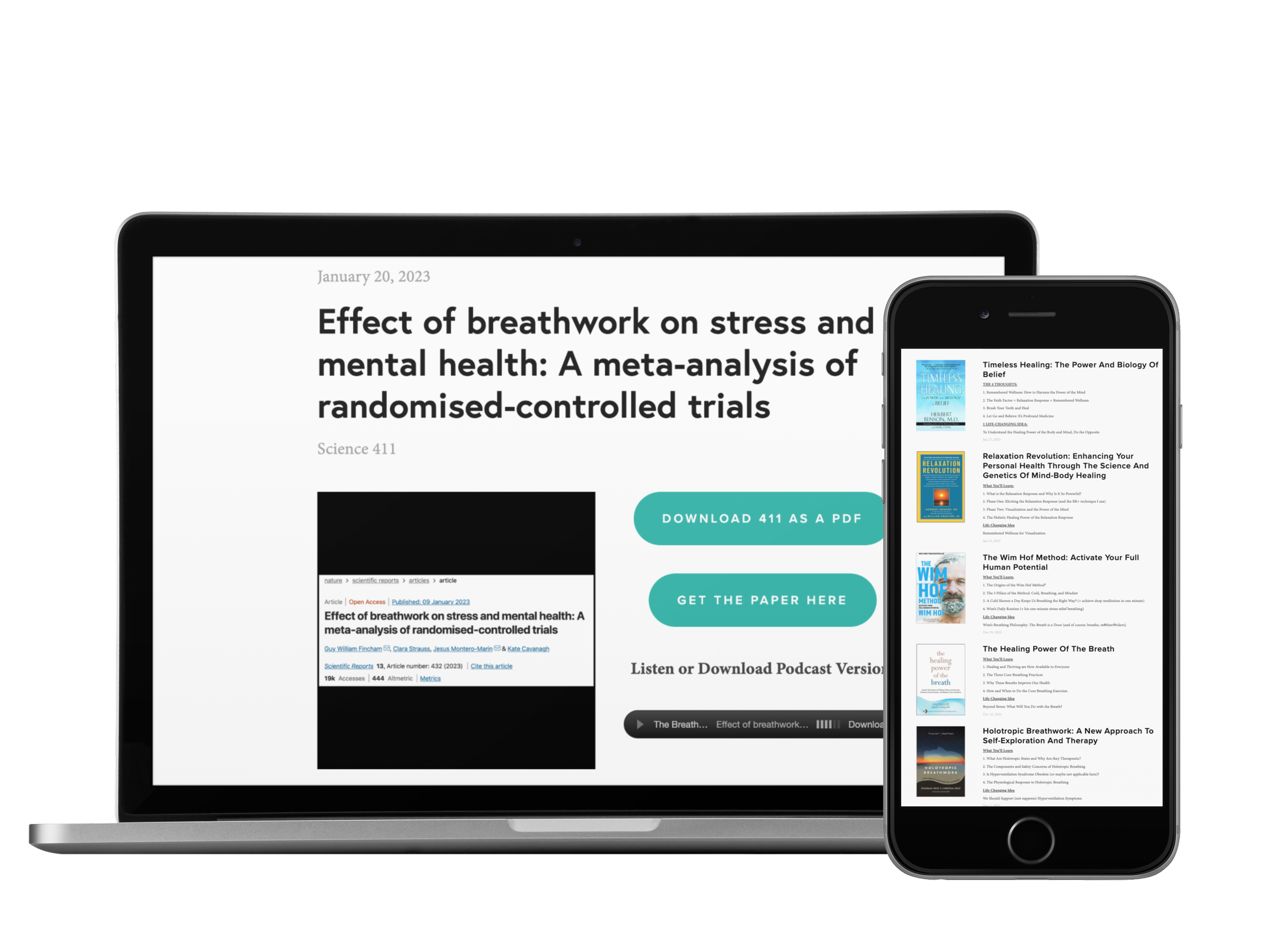Listen Instead of Reading
If you enjoy listening, you can subscribe to the audio version on Spotify, Apple Podcasts, and Audible so you don’t even have to look at the email 😊
Enjoy These Posts?
Reading Time: 1 min 31 sec
I hope the next 23’ish breaths are the most nourishing of your day.
4 THOUGHTS
1. Breathing Helps with Anxiety: a Meta-Analysis
“Anxious individuals who are unable to withstand the anxiety that accompanies the possibility of something bad happening in the future may experience respiratory interventions as a means by which to control their physiology. This may generalize to a greater sense of anxiety control and self-efficacy in managing symptoms.”
- Leyro et al. (2021)
This meta-analysis found that breathing significantly improves anxiety, both immediately and over the long term, providing effects similar to the gold-standard treatment of cognitive behavioral therapy.
Check out the paper here or sign up for the Breath Learning Center to get my review and takeaways 🙏
2. It Takes Just One Person (each of us)
“Pressure is contagious, but so is good will. Just one person slowing down, one person not putting others under pressure, helps everyone else to relax too.”
- Eknath Easwaran, Take Your Time
Here’s a great reminder that when we use slow breathing, meditation, and other contemplative practices to slow down, we help those around us relax, too 🙏
3. The Effects of Focused Attention on the Body & Mind
“When one-pointed attention is strong, the nervous system kicks into a relaxed mode. Heart rate slows, metabolic rate declines, digestion picks up, and brain activity associated with worry and agitation goes into neutral. It was a major surprise for Western scientists to find that something as simple as concentration could have such profound effects on the body.”
- Mark Epstein, MD, Advice Not Given
👏👏👏
4. How to Ease Your Own Troubles
“Sharing another person’s feelings of distress need not be a downer. As Dr. Aaron Beck…has said, when you focus on someone else’s suffering, you forget your own troubles.”
— Daniel Goleman, Ph.D. & Richard Davidson, Ph.D.
1 Quote
“In addition, the mental component of breath is a sense of rhythmic expansion and contraction. And I think that connects us to every other living thing because all living organisms breathe. So that same rhythm is at the center of the heart of all life.””
1 Answer
Category: The Nose
Answer: The bone & cartilage separating your two nostrils (which sometimes gets displaced) is called this.
…
(Cue the Jeopardy! music.)
…
Question: What is the nasal septum?
In good breath,
Nick Heath, T1D, PhD
“Breathing is the compound interest of health & wellness.”
P.S. beyond meditation
Breath Science & Wisdom Meditations for a Well-Lived Life
Learn to think, speak, and act in alignment with the person you want to be.
The Breathing App for Diabetes
This is the first program specifically made for people with diabetes to help manage their stress through breathing and mindfulness practices. In addition to the amazing program inside the app, we have some really neat things coming up, so sign up now!
Amazon Associate Disclosure
I’ve been recommending books for almost 6 years. Yet somehow, I just discovered that I could be an Amazon affiliate [face-palm]. In any case better late than never. Now, any Amazon link you click is an affiliate link. As an Amazon Associate, I earn from qualifying purchases. So, if you’d like to support my work, buying books through these links is helpful : )
* An asterisk by a quote indicates that I listened to this book on Audible. Therefore, the quotation might not be correct, but is my best attempt at reproducing the punctuation based on the narrator’s pace, tone, and pauses.



